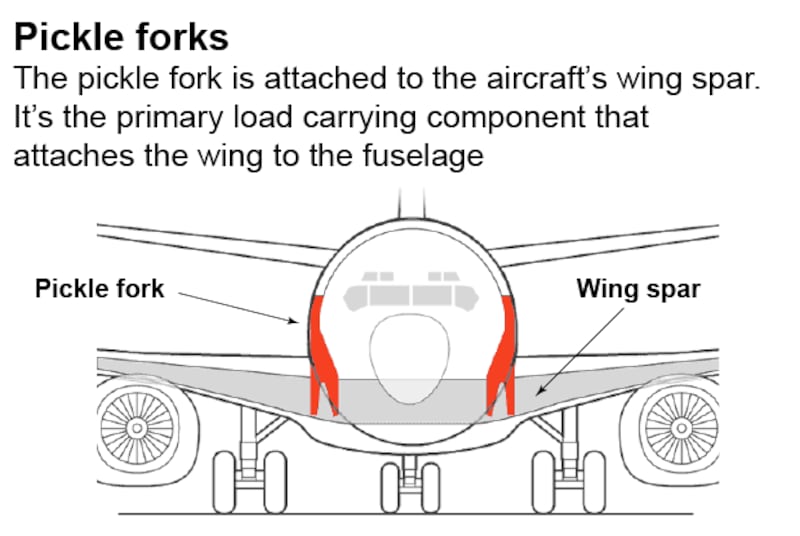US safety regulators have called on Boeing to redesign the protective covering of engines on its older 737 aircraft to prevent a repeat of the fatal accident last year in which a Southwest Airlines passenger was pulled through a window damaged by shattered cowling.
The National Transportation Safety Board has recommended that the US Federal Aviation Administration require Boeing to replace the fan cowling on all existing and future 737 Next Generation aircraft. Presently there are more than 7,000 737NGs flying, including more than 450 at Irish airline Ryanair.
The passenger was killed in April last year when Southwest flight 1380 suffered an engine failure roughly 30 minutes after take-off from La Guardia airport in New York. A defective fan blade broke off and shattered the protective covering of its CFM56-7B engine.
Fragments of the covering hit a window on the jet, depressurising the cabin and sucking the passenger out. She was pulled back in but died of her injuries.
Boeing stressed that the 737NG was still safe to fly and the issue was completely mitigated by inspections of the fan blades. The company said it was working on a design enhancement “that would fully address the safety recommendation from the NTSB”. In a statement it said: “Once approved by the FAA, that design change will be implemented in the existing NG fleet.”
The news is another challenge to Boeing’s reputation as it struggles to rebuild confidence after two fatal crashes of its newest 737 model, the Max, and other issues.
Pickle fork
Dozens of 737NGs have been grounded for repairs following the discovery of cracks in a component known as a “pickle fork” which connects the wing to the fuselage of the aircraft. The FAA requested last month that 737NGs with more than 30,000 take-offs and landings be inspected within two months.
At least three Ryanair Boeing 737s have been grounded due to cracks between the wing and fuselage though the airline has said it does not expect it to affect their operations or schedules.

Meanwhile, the entire 737 Max fleet has been grounded since March. Aviation regulators have pointed to the anti-stall software system designed by Boeing as a significant factor in the crashes of Lion Air flight 610 and Ethiopian Airlines flight 302, which killed 346 people in total.
Boeing said Tuesday’s NTSB’s ruling on engine coverings was “limited to the 737 NG and does not affect the 737 Max”.
One person with knowledge of the subject said it was possible that the existing covering could be strengthened rather than completely redesigned and retrofitted. This could mitigate the cost, which has not been disclosed.
The safety board made no recommendations for the fan blades. The crack in the faulty blade could not have been detected by either Boeing or the jet engine maker CFM International, the NTSB said. Since the Southwest accident, operators are required to perform ultrasound inspections every nine to 12 months, which would allow potential issues to be identified earlier.
“Our standard practice is to develop and certify engines in close collaboration with our airframe partners, working within the appropriate regulatory framework,” CFM said in a statement. “We will continue to strictly comply with regulatory requirements, including any changes that might be adopted as a result of NTSB’s recommendations.”
Workhorse
Both the CFM56 engine and the 737 single-aisle aircraft have been seen as the workhorses of aviation, widely used by low-cost and legacy airlines to serve the rapidly rising number of passengers globally.
The 737 family has been Boeing's best-selling group of aircraft, but the jet has suffered severe reputational damage as a result of the fatal crashes of the Max. Boeing is accused of rushing the 737 Max through production to stave off a rising challenge from its European rival Airbus and of ignoring safety concerns expressed by employees. The company denies the allegations.
Boeing shares closed down 0.7 per cent on Tuesday at $367 each. This compares with a trading level around $360 a share before the first of the fatal crashes involving the 737 Max in October last year. – Copyright The Financial Times Limited 2019









